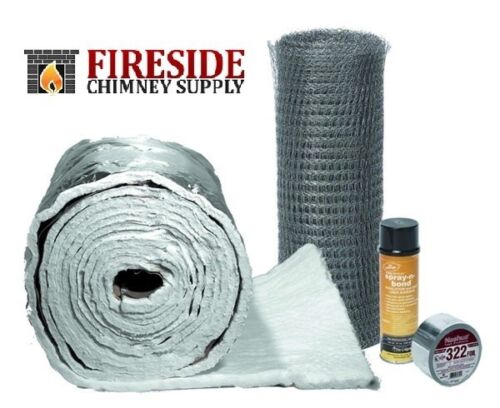Going to be putting this woodburner insert into the existing open fire place and wanted to know
1. If its ok to block off the smoke shelf opening with sheet metal and insulation on top of it.
2. Do I need a flue liner or can I just run the flue up a meter or 2 through Mr blocking plate and why.
3. Do I need to line the inside walls with insulation or anything or are the bricks ok. Thank you
Also this fireplace is in the middle of the living room and not connected to any external wall, you can walk around the whole thing.
![[Hearth.com] Need advice on installing woodburner into existing open fireplace. [Hearth.com] Need advice on installing woodburner into existing open fireplace.](https://www.hearth.com/talk/data/attachments/313/313065-da2331a32056ea1eed01ee32c61758fc.jpg?hash=qJMg1AvNcQ)
![[Hearth.com] Need advice on installing woodburner into existing open fireplace. [Hearth.com] Need advice on installing woodburner into existing open fireplace.](https://www.hearth.com/talk/data/attachments/313/313066-331ddfd78a88946a33358f98f18c7545.jpg?hash=9YZFWqRMlf)
![[Hearth.com] Need advice on installing woodburner into existing open fireplace. [Hearth.com] Need advice on installing woodburner into existing open fireplace.](https://www.hearth.com/talk/data/attachments/313/313067-418f6b942c435c6cb0b1342bb34a2fe8.jpg?hash=5qBgNRLO5Y)
1. If its ok to block off the smoke shelf opening with sheet metal and insulation on top of it.
2. Do I need a flue liner or can I just run the flue up a meter or 2 through Mr blocking plate and why.
3. Do I need to line the inside walls with insulation or anything or are the bricks ok. Thank you
Also this fireplace is in the middle of the living room and not connected to any external wall, you can walk around the whole thing.
![[Hearth.com] Need advice on installing woodburner into existing open fireplace. [Hearth.com] Need advice on installing woodburner into existing open fireplace.](https://www.hearth.com/talk/data/attachments/313/313065-da2331a32056ea1eed01ee32c61758fc.jpg?hash=qJMg1AvNcQ)
![[Hearth.com] Need advice on installing woodburner into existing open fireplace. [Hearth.com] Need advice on installing woodburner into existing open fireplace.](https://www.hearth.com/talk/data/attachments/313/313066-331ddfd78a88946a33358f98f18c7545.jpg?hash=9YZFWqRMlf)
![[Hearth.com] Need advice on installing woodburner into existing open fireplace. [Hearth.com] Need advice on installing woodburner into existing open fireplace.](https://www.hearth.com/talk/data/attachments/313/313067-418f6b942c435c6cb0b1342bb34a2fe8.jpg?hash=5qBgNRLO5Y)


![[Hearth.com] Need advice on installing woodburner into existing open fireplace. [Hearth.com] Need advice on installing woodburner into existing open fireplace.](https://www.hearth.com/talk/data/attachments/313/313085-35e48715b7c97c8a4416afa14acfb973.jpg?hash=fycxVMM2jo)
